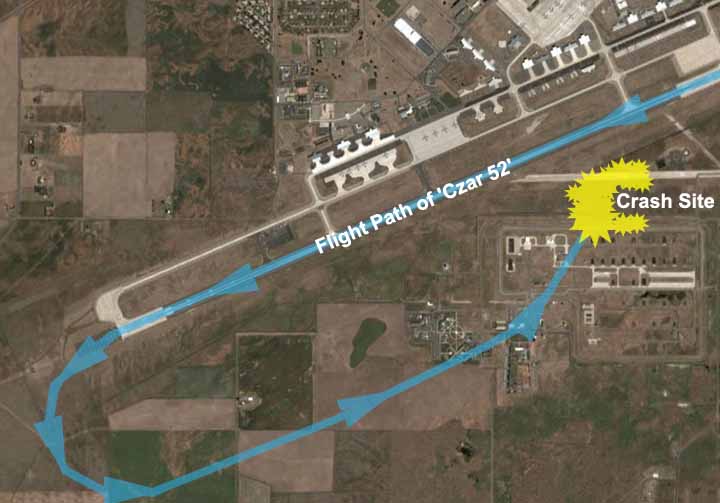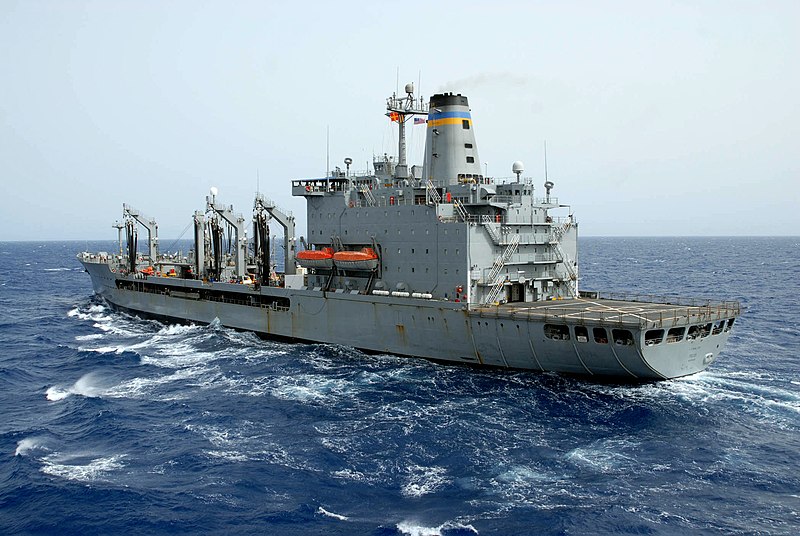According to the information in the YouTube posting, this incident is from an Enstrom helicopter on the helipad of a Greenpeace ship some where off the coast of Ireland. One of the deck straps has not been released correctly, with very nearly disastrous consequences. what was
23 October 2009
22 October 2009
Fatal Crash of a Marine Sea Knight Helicopter on 9 December 1999 Near San Diego
One December 9, 1999, a US Marine CH-46 Sea Knight crashed during a training exercise involving the USNS Pecos. The helicopter had departed from the USS Bonhomme Richard with a crew of 18 for a training exercise at the USNS Pecos.
The helicopter approached the Pecos low and fast, and the left rear wheel of the helicopter had struck and became entangled in the safety netting at the rear of the Pecos. As the pilots attempted to lift off, the helicopter's landing gear remained entangled, causing it to roll to the left and crash into the water.
Eleven of the 18 escaped the helicopter and survived. Seven others were killed in the mishap.
The Marine Corps investigation into the cause of the crash concluded the mishap was caused by human error, stating that the helicopter was flying too low and too fast when it approached the landing pad on the Pecos.
Additional Resources
Accident Description from Check-Six.com
The helicopter approached the Pecos low and fast, and the left rear wheel of the helicopter had struck and became entangled in the safety netting at the rear of the Pecos. As the pilots attempted to lift off, the helicopter's landing gear remained entangled, causing it to roll to the left and crash into the water.
Eleven of the 18 escaped the helicopter and survived. Seven others were killed in the mishap.
The Marine Corps investigation into the cause of the crash concluded the mishap was caused by human error, stating that the helicopter was flying too low and too fast when it approached the landing pad on the Pecos.
CH-46D Accident on USNS Pecos
Additional Resources
Accident Description from Check-Six.com
20 October 2009
Close Call When an R44 Helicopter Hits a Hanger and Crashed on 5 August 2004
In this 5 August 2004 accident (NTSB Report CHI04LA212) in Chesterfield, MO, a Robinson R44 helicopter (N7036J), with a pilot and three passengers on board, was substantially damaged when the main rotor contacted an open hangar door during takeoff and the helicopter subsequently impacted the ground. The pilot stated that the helicopter was parked on the ramp approximately 35 feet from the hangar. The hangar door was open and extended about 10 feet out over the ramp. A review of a video of the accident taken by a witness on the ground revealed that after the helicopter lifted off, it paused in a hover for a few seconds and then began to climb out, subsequently contacting the door.
The helicopter's main rotor clipped the bottom edge of the door, and then descended to the ramp. The subsequent hard landing caused the skids to collapse and the main rotor to sever the tail boom. A ground witness to the accident submitted a video recording of the accident flight. No drift toward the hangar building was observed prior to rotor blade contact with the door.
Probable Cause
The NTSB concluded that the crash was due to the pilot's inadequate preflight planning, his selection of an unsuitable takeoff area, and his failure to maintain clearance from the open hangar door. They also concluded that the open hangar door was a contributing factor.
Additional Information
Although the NTSB states that the helicopter was substantially damaged, FAA registry records show that the aircraft was destroyed and that the registration number (N7036J) was canceled about three months after the crash.
Related Information
NTSB Factual Report (PDF)
NTSB Probable Cause Findings (PDF)
NTSB Full Narrative
The helicopter's main rotor clipped the bottom edge of the door, and then descended to the ramp. The subsequent hard landing caused the skids to collapse and the main rotor to sever the tail boom. A ground witness to the accident submitted a video recording of the accident flight. No drift toward the hangar building was observed prior to rotor blade contact with the door.
Witness Video of Accident Flight
Source: NTSB
Source: NTSB
Probable Cause
The NTSB concluded that the crash was due to the pilot's inadequate preflight planning, his selection of an unsuitable takeoff area, and his failure to maintain clearance from the open hangar door. They also concluded that the open hangar door was a contributing factor.
Additional Information
Although the NTSB states that the helicopter was substantially damaged, FAA registry records show that the aircraft was destroyed and that the registration number (N7036J) was canceled about three months after the crash.
Related Information
NTSB Factual Report (PDF)
NTSB Probable Cause Findings (PDF)
NTSB Full Narrative
18 October 2009
Crash of "Czar 52" B-52 at Fairchild AFB on 24 June 1994
Every accident is an opportunity to learn about what caused the accident and what can be done to prevent them in the future. Often the cause is partly due to technology, and sometimes the causes are due entirely to human nature. In the case of the crash of a B-52 (call sign Czar 52) at Fairchild Air Force Base in 1994, which occurred during a practice run for an upcoming air show and killed all four crewmen on board, the human failings were in the cockpit, in the organization, and in the larger community around this military unit.
The videos and photo in this posting are dramatic, but the case studies and other material associated with this crash are even more fascinating.

The object near the tail is the hatch cover that was blown out during the copilot's unsuccessful ejection attempt.

Darker Shades of Blue
An excellent overview of the social dynamics and failures of military leadership that led to the accident is Dr. Anthony Kern's Darker Shades of Blue: A Case Study of Failed Leadership. This was an extensively researched case study based on publicly available information from 49 individual testimonies from the USAF aircraft accident investigation board transcripts, or through 11 personal interviews conducted by Dr Kern.
Other Resources
Wikipedia Entry on the Crash
Accident Overview from Check-Six.com
Accident Overview from Wapedia.mobi
The videos and photo in this posting are dramatic, but the case studies and other material associated with this crash are even more fascinating.
Video From a TLC Show About the Crash
Longer Version of the Accident Flight
Czar 52 Just Prior to Impact

The object near the tail is the hatch cover that was blown out during the copilot's unsuccessful ejection attempt.
Aerial View of Flight Path and Crash Site

Darker Shades of Blue
An excellent overview of the social dynamics and failures of military leadership that led to the accident is Dr. Anthony Kern's Darker Shades of Blue: A Case Study of Failed Leadership. This was an extensively researched case study based on publicly available information from 49 individual testimonies from the USAF aircraft accident investigation board transcripts, or through 11 personal interviews conducted by Dr Kern.
Other Resources
Wikipedia Entry on the Crash
Accident Overview from Check-Six.com
Accident Overview from Wapedia.mobi
Subscribe to:
Posts (Atom)












